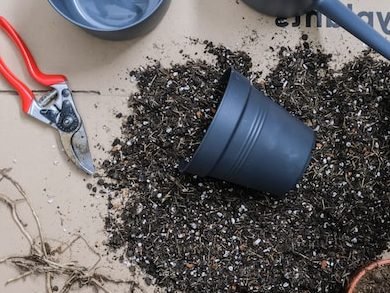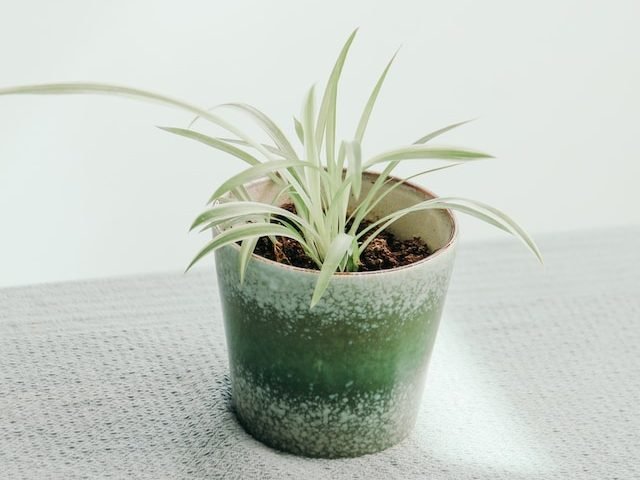
Best known for their incredible heart-shaped leaves with striking white veins, the Anthurium Clarinervium is an incredible houseplant that will add that wow factor to every room. It can be quite concerning, however, when you notice that the leaves on your Anthurium Clarinervium have started to turn yellow. Whether this appears as yellow spots, large yellow patches or even an entire yellow leaf, it’s important that you get to the bottom of the problem and bring your Anthurium Clarinervium back to full health. The less the issue has progressed and the quicker you solve the problem, the greater chance you have at avoiding plant death.
Diagnosing the cause of the yellow leaves isn’t always a walk in the park though and there are several factors that can cause them. Below we will go through each of the causes so you can figure out what is wrong with your Anthurium Clarinervium.
Consistent overwatering
Let’s start with the most common cause of yellow leaves on Anthurium Clarinerviums – too much water over a long period of time. Although Anthurium Clarinerviums likes some moisture in the soil, they don’t do so well if it becomes quite waterlogged as their roots will begin to rot. This won’t happen if you just overwater once or twice, but if this happens consistently, then you will have a problem on your hands. Once the roots have started to rot your Anthurium Clarinervium won’t be able to get all the nutrients it needs and the leaves will turn yellow as well as potentially turn mushy and droop down.
Before you go changing anything in how much or how often you water your Anthurium Clarinervium, you want to be certain that this is the cause. The best way to know is by taking your Anthurium Clarinervium out of its pot and inspecting the soil and roots. If the potting mix is very moist and clumpy, and the root system feels a little mushy then overwatering is definitely causing the yellow leaves. You can also check the soil using a moisture meter to determine if it’s waterlogged. They are a great investment for all plant parents – a lot cheaper than having to buy new plants that’s for sure!!
If you do have waterlogged soil, it’s important that you replace it immediately rather than leaving it to dry out on its own. You don’t want to risk any more damage to your plant’s roots as this will only cause more yellow patches on your Anthurium Clarinervium;
To get your Anthurium Clarinervium back on the road to full health, trim away the rotten roots and worst affected yellow leaves. This will allow your Anthurium Clarinervium to focus all of its energy on growing new healthy green growth.
Temperature extremes and fluctuations
Another cause of yellow leaves on Anthurium Clarinervium plants can be cold temperatures and drafty rooms. Anthurium Clarinerviums need warm temperatures (or at least room temperature) to really thrive so it’s important that you put your plant in the warmest room in the house over winter.
You also want to avoid placing your Anthurium Clarinervium near doors or windows that are drafty. Even though the temperature of your home may be perfect for your Anthurium Clarinervium plant, the drafts coming in from outside will be much colder (especially in winter) and harm your plant’s health. You can always pick up a digital thermometer to check the temperatures across your home if you are unsure.
Nutrient deficiency
A lack of nutrients may also be why your Anthurium Clarinervium has yellow leaves. It can happen that over time the soil becomes very nutrient deficient, or overwatering has flushed out all of the nutrients from the potting mix.
There are two methods that will help increase the level of nutrients for your Anthurium Clarinervium and avoid more yellow leaves developing on your plant. Firstly, remove all of the old potting mix and replace it with new nutrient-rich houseplant potting soil. Alternatively, you can treat with a well-balanced houseplant fertiliser at half strength. Our houseplants have always liked the liquid fertiliser from Miracle Gro which is available from Amazon here.
Direct sunlight
If your Anthurium Clarinervium has yellow patches all over the leaves, then it may be due to too much intense sunlight. If your Anthurium Clarinervium is receiving a high level of direct sunlight then the leaves can become burnt and scorched. This is more of a risk during summer as the sun is a lot stronger and out for more of the day. If this is the cause, you’ll notice that the leaves facing the window are the worst affected. Unfortunately, once the leaf has been scorched by the sun there is no going back. We recommend trimming away the yellow parts of the leaf to encourage new healthy growth.
Avoid putting your plant next to a window that receives a lot of direct light (south-facing in the northern hemisphere). We recommend you put them slightly closer to the windows during winter though as the sun isn’t as strong and they don’t do so well in lower light areas. So it’s all about getting that balance right.
Pests can also cause yellow leaves
Although a pest infestation is quite rare on plants that only spend time indoors, Anthurium Clarinervium can begin to show yellow leaves if infested by pests. Insects such as mealybugs or spider mites might be living on your plant and sucking their nutrients without you even noticing, which will cause the leaves to turn yellow.
To identify whether your Anthurium Clarinervium is suffering from a pest infestation, use a magnifying glass to spot them on the leaves. They like to hang out on the undersides of leaves or near the leaf and stem joints so look extra carefully there. Other signs of pests include small brown and yellow spots, white webbing or holes in the leaves.
Although spotting pests can be easy, treating them can be a bit of a pain. Shower down your plant, treat with neem oil and a natural insecticide. Make sure to isolate your plant as soon as you spot signs of pests to avoid them jumping onto any of your other beloved houseplants.
Those are the main causes of yellow leaves on Anthurium Clarinervium plants. It’s important that you act as soon as you notice the first sign of trouble as problems are more easily solved when they haven’t progressed as far. Take a look through each of the factors above whilst inspecting your Anthurium Clarinervium closely to give you the best chance at finding the true cause of the yellow leaves.
Unfortunately, once the leaves have turned yellow, there isn’t anything you can do to reverse this so we recommend trimming away the worst affected leaves so your Anthurium Clarinervium can focus on growing new healthy stems and leaves.
To learn more about how to best care for your plant, as well as propagation and general care tips, check out our Anthurium Clarinervium care guide.















